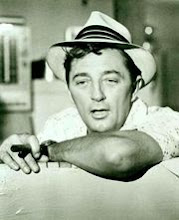
Bashar al-Assad believes that Syria is different than any other country in the region, and because it is 'stable' it will not be swept up by the revolutionary winds that are blowing. But that apparently is not so. This New York Times op-ed is from a Syrian dissident whose name has been disguised.
The Syrian government now seemed to understand that it had to take this surge of unrest seriously. So last week a counselor to Mr. Assad affirmed the right to peaceful protest, assuring Syrians that government troops had been ordered not to open fire on demonstrators.
The next day, a Friday, I went out with one of my friends to join a small protest in the Hamidiyah Market in the Old City section of central Damascus. We were, all in all, just a few dozen people chanting slogans for freedom, and yet we were surrounded by hundreds of members of the security forces, who responded with chants in support of President Assad. The security forces then began to beat and arrest protesters. My friend and I slipped away from the market and headed to Marja Square, just outside the Old City, where — it turned out — even more security forces were waiting for us.
First, they went after those photographing and recording the demonstration with their mobile phones. Then they began to hit the rest of us with batons and sticks. Dozens were arrested. (They are still in police custody, but we don’t know where.)
After that, the security forces were joined by other young men, apparently civilians, who formed themselves into a march for President Assad. This demonstration the guards allowed to be photographed and recorded. And, in the evening, state television reported on the marches all over Damascus in support of Mr. Assad.
That same day, the situation worsened elsewhere in Syria, when security forces violently oppressed protests in the cities of Homs and Latakia. Dozens of peaceful protesters were killed in Dara’a.
When the international community condemned the violence, the Syrian regime began to blame “armed groups,” from inside and outside the country, for killing the civilians in Dara’a as well as members of the security forces. The official Syrian position on the motives and nationality of the armed men changes often: sometimes they are Palestinian or Jordanian; sometimes they are working at the behest of foreign operatives from Israel or the United States. An Egyptian-American was even arrested on charges of espionage and, on state television, made a transparently false confession to inciting the protests and to being paid 100 Egyptian pounds ($17) for each photo he took.
This conspiracy theory, to which the regime continues to cling and of which many Syrians have been convinced, means that there are conflicting reports of the violence in places like Latakia. Eyewitness reports of what happened there last weekend vary: some say security forces opened fire on a peaceful protest; others spoke of snipers on the rooftops shooting civilians and security forces alike; still others of cars using loudspeakers to stir up the residents of different neighborhoods of the city against one another on sectarian grounds. What is certain is that people are now dead.
And it is also clear that these “armed groups” attacked only those protesters asking for freedom and reform, those who rally for those killed in Dara’a and elsewhere, who call out “peaceful, peaceful.” One can’t help but wonder why the police did nothing to protect these small groups of demonstrators. Some commentators close to the Syrian regime have justified this lack of action by saying that the security forces could not defend civilians because of President Assad’s orders not to fire.
Read the whole thing.
Stability? At what price? And did Barack Obama go after the wrong dictator?
Labels: Bashar al-Assad, Syrian regime change
posted by Carl in Jerusalem @ 11:37 AM


No comments:
Post a Comment